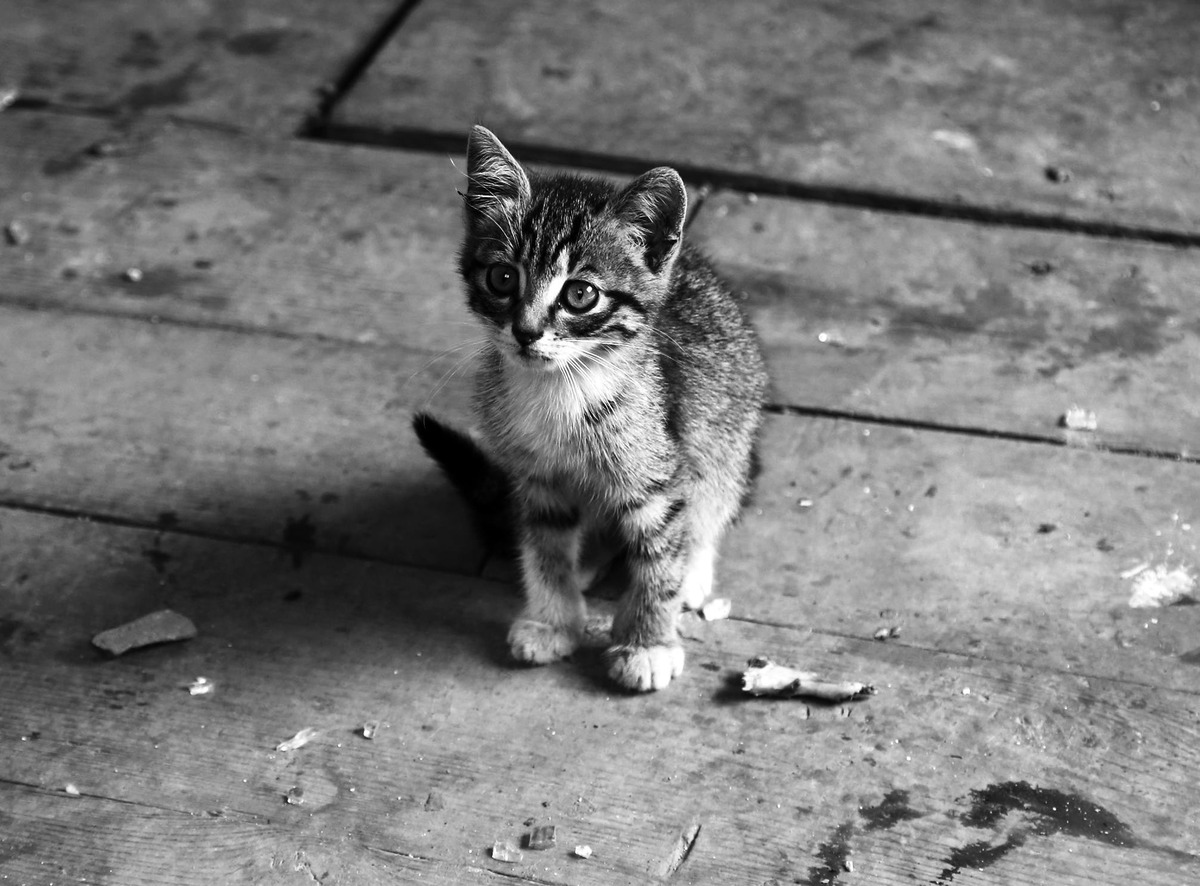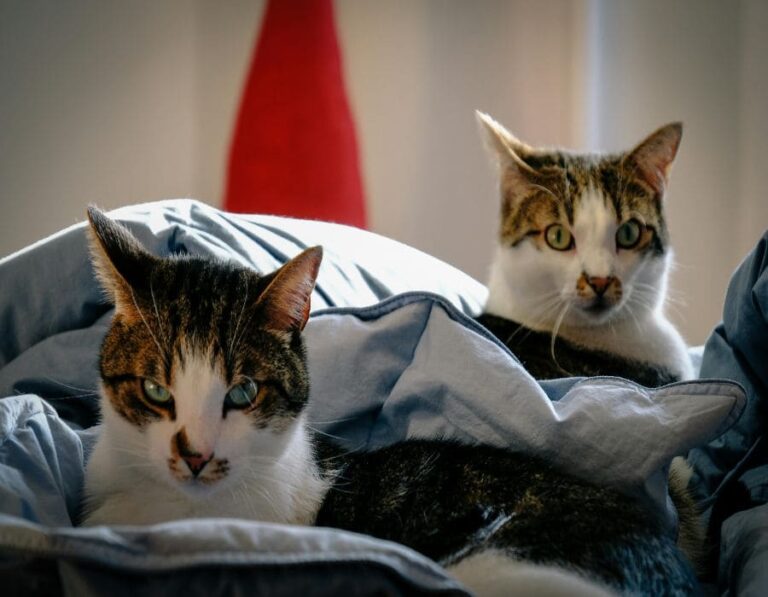How to Know If a Cat Needs Help? 7 Signs to Watch For
Cats are known for their independent nature, but that doesn’t mean they never need help. Whether it’s a stray, a neighbor’s pet, or even your own cat, knowing when a feline is in distress can make a life-saving difference. Cats are experts at hiding pain and discomfort, so it’s important to recognize the subtle signs that indicate they may need assistance.
Here are 7 signs that a cat might need help, along with what you can do to assist them.
1. Visible Signs of Injury or Illness
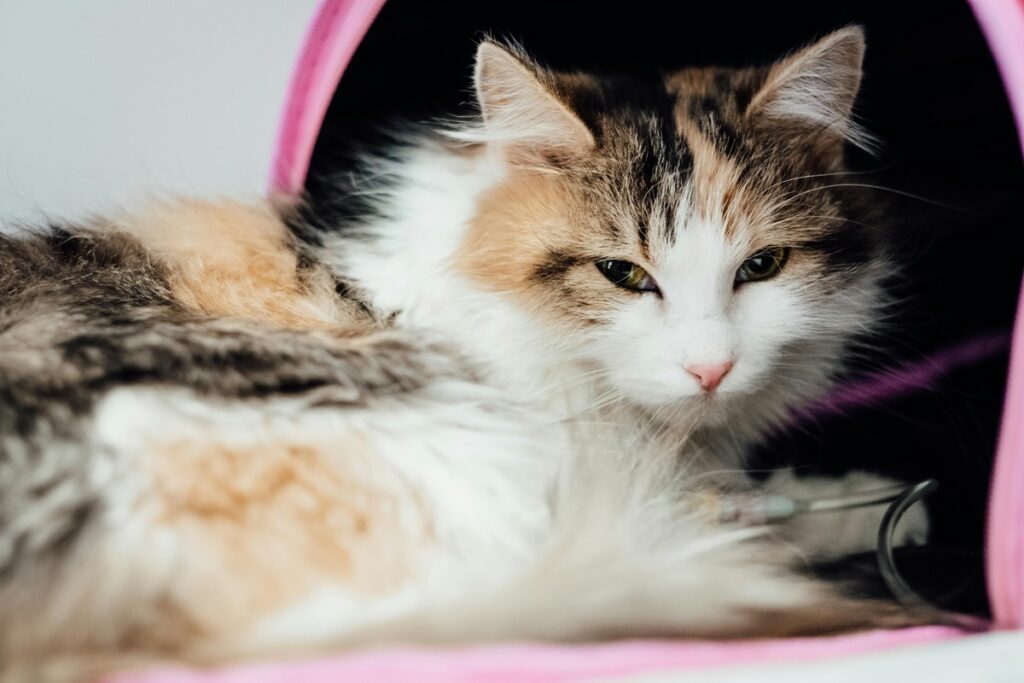
One of the most obvious signs that a cat needs help is visible injury or illness. If you notice limping, open wounds, swelling, difficulty breathing, or signs of infection, the cat needs immediate veterinary care.
Some injuries may not be as obvious. If a cat is constantly licking one spot, refusing to put weight on a limb, or wincing when touched, they could be in pain or suffering from an internal injury. Eye infections, respiratory distress (wheezing, coughing), and excessive drooling are also red flags that require medical attention.
What You Can Do: If the cat is approachable, try gently containing them in a carrier and taking them to a vet or animal rescue center. If they are fearful or aggressive, contact a local animal welfare group for guidance.
2. Extreme Weight Loss or Malnourishment
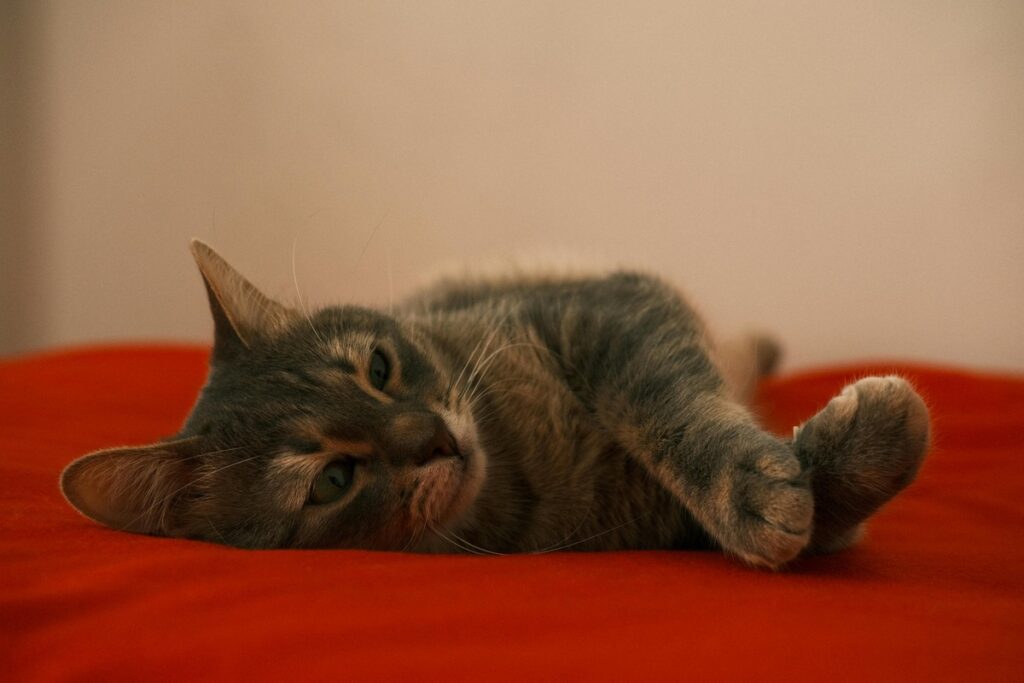
A cat that appears underweight with visible ribs and a protruding spine may be malnourished or suffering from an underlying health issue. Stray and feral cats often struggle to find enough food, and some may be sick or have dental problems preventing them from eating properly.
A cat that suddenly loses weight despite regular meals may have an illness such as hyperthyroidism, diabetes, or kidney disease, all of which require veterinary care.
What You Can Do: If the cat is a stray, offer food and fresh water to help determine if they are just underfed or possibly ill. If weight loss is accompanied by other symptoms like lethargy or vomiting, they need medical evaluation.
3. Constant Hiding or Fearful Behavior
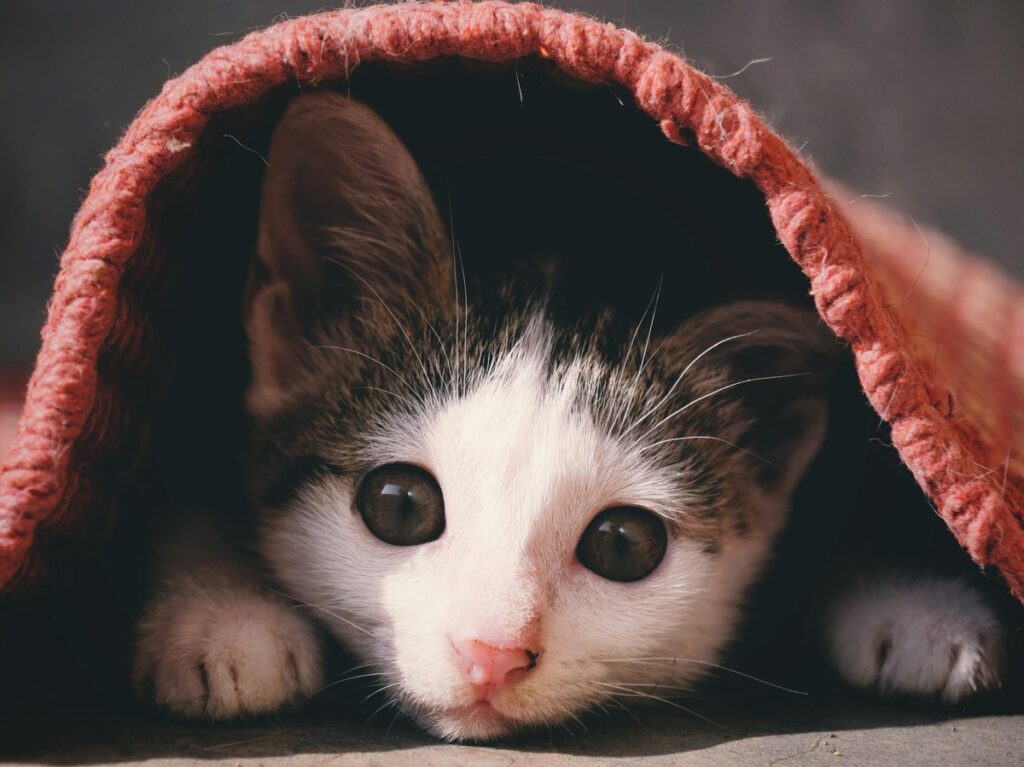
While some cats are naturally shy, extreme hiding or sudden fearfulness can signal stress, illness, or trauma. A sick or injured cat may isolate itself because it feels vulnerable, while a once-friendly cat that now avoids people might have experienced abuse, neglect, or a recent traumatic event.
Outdoor cats that suddenly stop coming around or hide in unusual places may be sick, injured, or feeling unsafe due to a nearby threat (such as predators or aggressive animals).
What You Can Do: Observe the cat from a distance and look for other signs of distress. If the cat is approachable, check for wounds, signs of dehydration, or difficulty moving. If the cat is in danger, try to provide a safe, quiet space for them.
4. Difficulty Moving or Limping
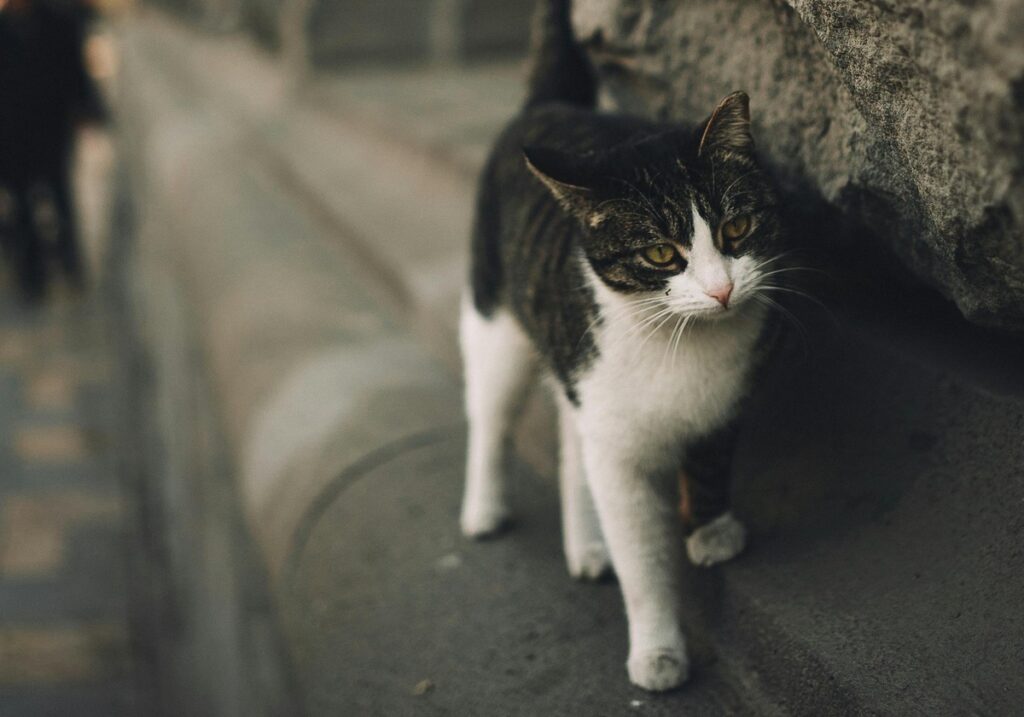
A cat that is dragging a leg, walking stiffly, or struggling to jump could have a broken bone, arthritis, nerve damage, or another painful condition. Even if the cat is still mobile, limping is a sign that something is wrong and shouldn’t be ignored.
Older cats may develop arthritis, while younger cats could have suffered a fall, a car accident, or a fight with another animal. Without treatment, these conditions can worsen over time.
What You Can Do: If the cat is in obvious pain, try to gently contain them and get them to a vet. If they are a stray or fearful, contact a local animal rescue group to help assess the situation.
5. Matted, Dirty, or Poorly Groomed Fur
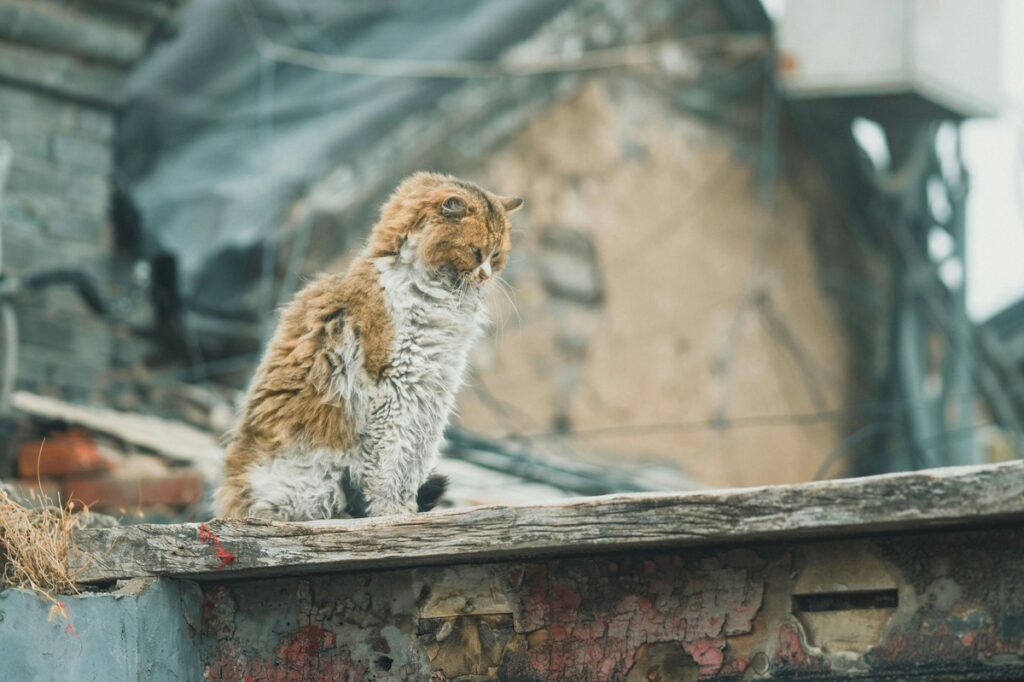
Cats are meticulous groomers, so a dirty, unkempt coat is a strong sign that something is wrong. A cat that stops grooming itself could be suffering from pain, illness, or severe stress.
Matted fur is common in long-haired cats that are unable to clean themselves properly, often due to old age, obesity, or underlying health problems. Additionally, a cat that is covered in fleas, ticks, or dirt may be struggling to survive outdoors and could need intervention.
What You Can Do: If the cat is approachable, gently brushing their fur and checking for parasites can help. If their coat is severely matted or they show signs of discomfort, they may need professional grooming and veterinary care.
6. Excessive Meowing or Sudden Silence
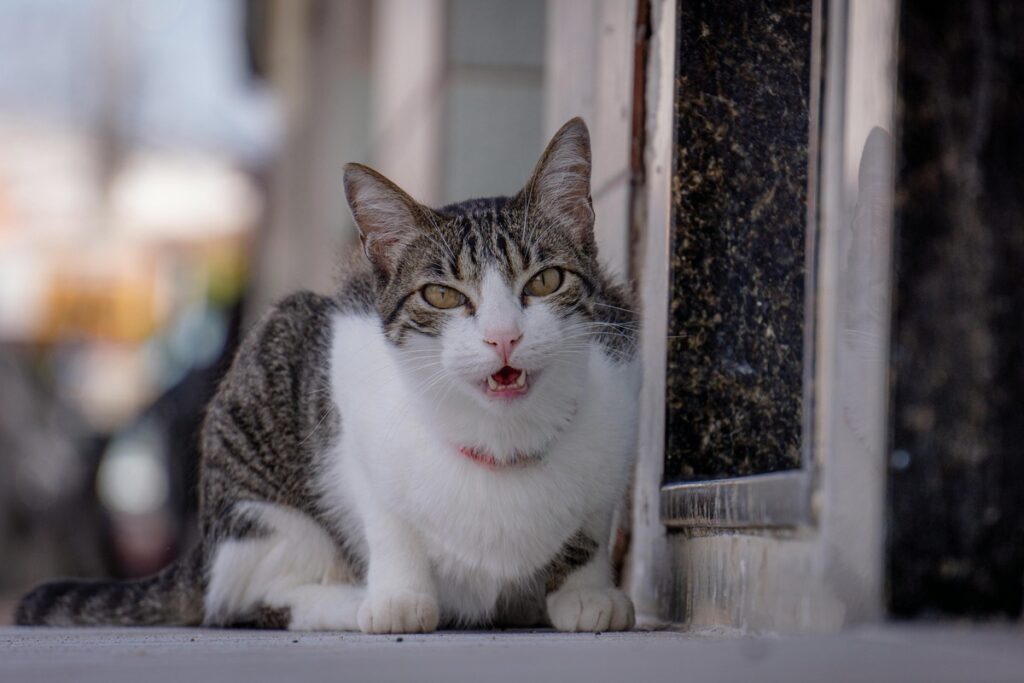
Cats communicate through body language and vocalizations, so a sudden increase or decrease in meowing can signal distress. A cat that constantly cries out may be in pain, hungry, lost, or seeking help, while a normally vocal cat that goes silent may be too weak to express itself.
Female cats in heat will yowl loudly, but excessive meowing outside of mating behaviors can indicate injury, stress, or an underlying medical condition.
What You Can Do: If a cat is meowing excessively, check for signs of injury, hunger, or illness. If the cat appears lost, scan for a microchip or check local lost pet reports.
7. Being Left Behind or Abandoned
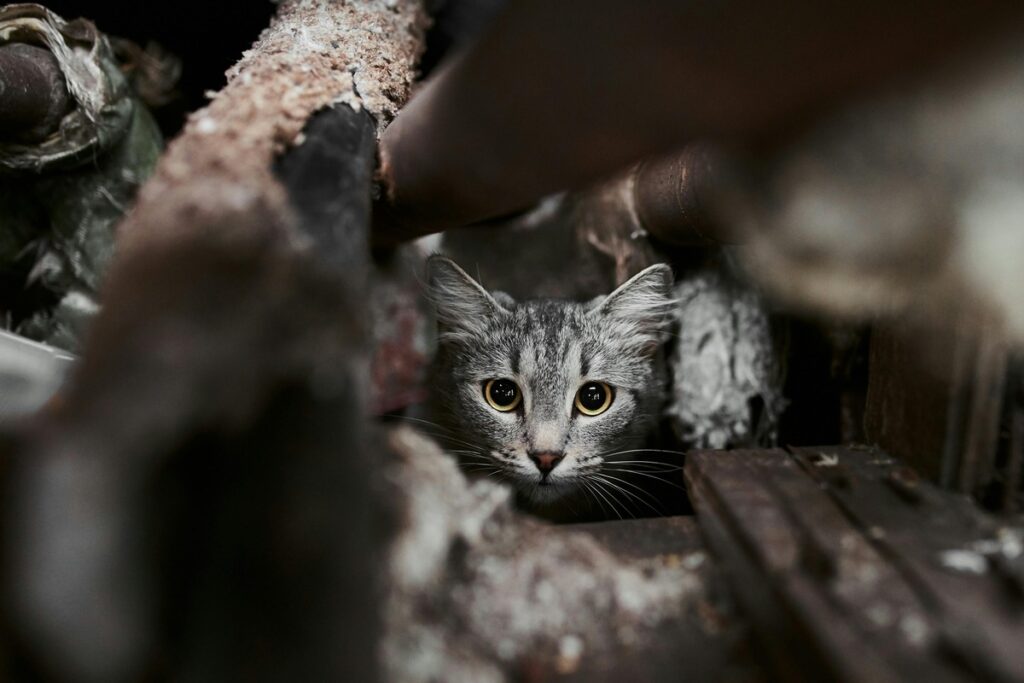
Sometimes, a cat may appear friendly and well-fed but is actually lost or abandoned. If a cat suddenly shows up at your home, lingers near a business, or appears confused in an unfamiliar area, they may have been dumped or separated from their owner.
Stray and feral cats often avoid humans, but an abandoned pet may approach people for food, attention, or shelter. These cats are particularly vulnerable because they lack the survival skills of truly feral cats.
What You Can Do: Check for a collar or identification tags, and if the cat seems tame, scan for a microchip at a local vet or shelter. If no owner is found, consider fostering or contacting a rescue group for assistance.
Helping a Cat in Need
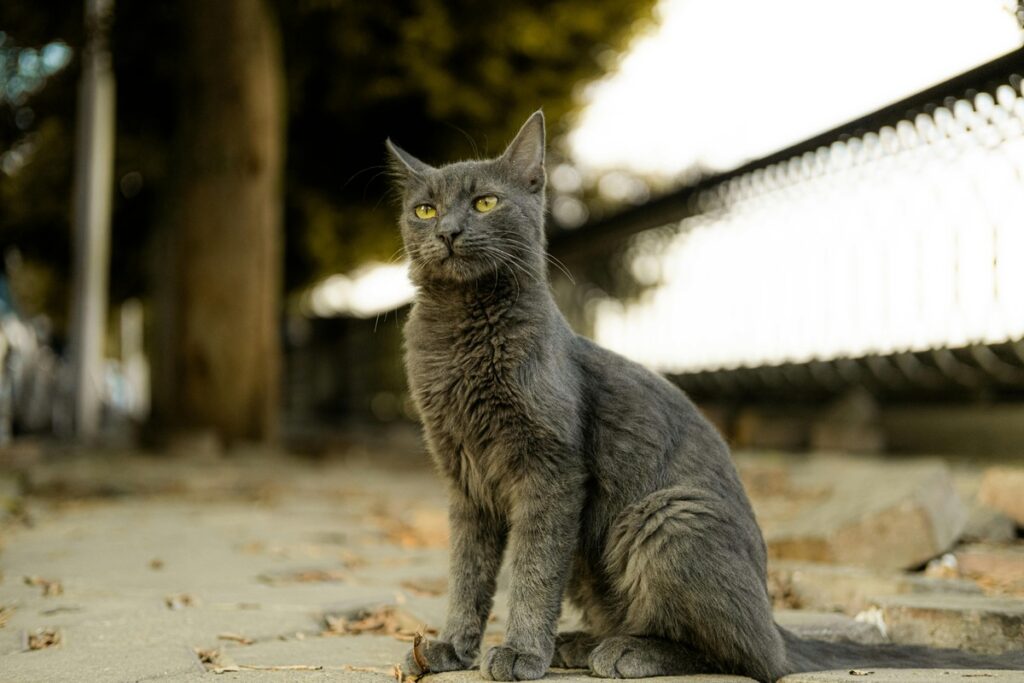
Cats are incredibly resilient, but they still rely on humans for protection, medical care, and kindness when they’re struggling. If you notice a cat displaying any of these 7 signs of distress, taking action—whether through providing food, contacting a rescue, or seeking medical attention—could make all the difference in their survival.
Even if you’re unsure whether a cat needs help, it’s always better to observe, assess, and offer assistance when necessary. A small act of compassion could mean the difference between life and death for a cat in need.

